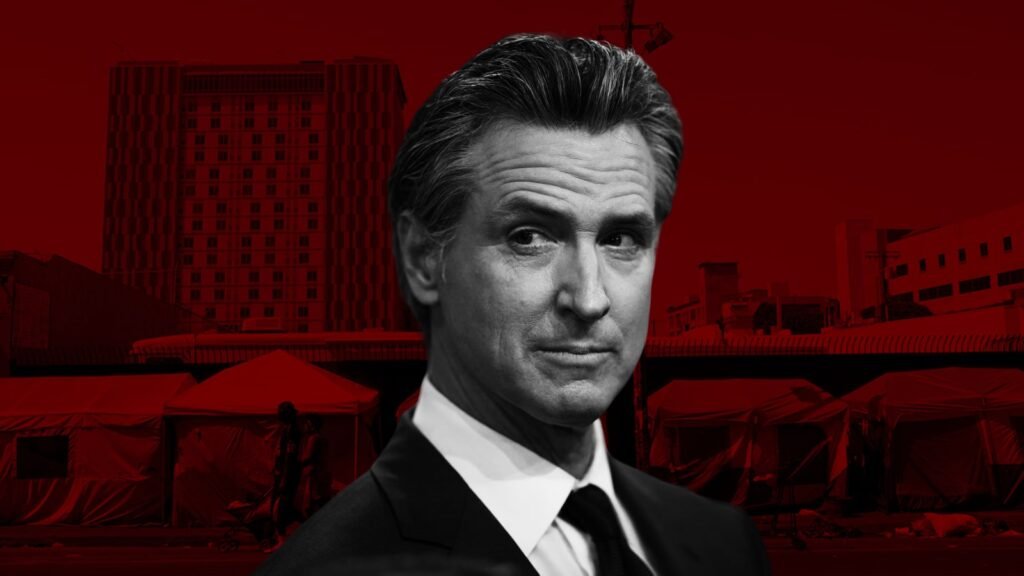California Governor Gavin Newsom Orders Removal of Homeless Encampments Following Supreme Court Ruling
On Thursday, California Governor Gavin Newsom issued an executive order directing state agencies to remove homeless encampments on state land. This marks his most decisive action yet, following a recent Supreme Court ruling that allows cities to enforce bans on sleeping outside in public spaces.
Executive Order Details
The order instructs state agencies “to move urgently to address dangerous encampments while supporting and assisting the individuals living in them.” Although the directive provides guidance for cities and counties to follow similar protocols, they are not legally obligated to comply.
California, which houses roughly one-third of the nation’s homeless population, has faced mounting challenges in addressing this issue. Under Newsom’s leadership, state agencies, including state parks and the Department of Transportation, must prioritize removing encampments that pose safety risks, particularly those near waterways. Officials are required to provide “reasonable” advance notice to those affected, offer connections to local services, and store belongings for at least 60 days. Local cities and counties are encouraged to adopt similar measures.
Supreme Court Ruling and Its Implications
Last month, the U.S. Supreme Court overturned a lower court ruling that prohibited governments from forcing people to leave encampments if there were no available shelter beds. This case was the most significant regarding homelessness to come before the high court in decades. Cities across the nation have grappled with the complex task of addressing rising homelessness and related public health and safety concerns.
Newsom’s administration supported cities’ arguments, stating that previous rulings, including one barring San Francisco from clearing encampments, had hindered the state’s efforts to tackle this critical problem.
“There are simply no more excuses. It’s time for everyone to do their part,” Newsom declared in a statement on Thursday.
Responses and Criticisms
Newsom’s decision received praise from local elected officials and business groups, who felt constrained before the Supreme Court’s ruling. San Francisco Mayor London Breed announced an “aggressive” campaign to clear encampments in August, noting that the governor’s order does not impact the city’s operations.
“I applaud Governor Newsom’s emphasis on urgency,” said Kathryn Barger, a Los Angeles County Board of Supervisors member. “He rightfully points out that local government remains at the helm of homeless encampment removals. Cities have an obligation to develop housing and shelter solutions in tandem with support services provided by County government.”
Even Republican lawmakers, who have criticized Newsom’s handling of the crisis, rallied behind the order.
“It’s about damn time! Letting people live and die on the streets or in our parks is unsafe and unsanitary,” stated Senate Minority Leader Brian Jones. “I am cautiously optimistic that the governor has finally taken note of the urgency of this problem, albeit many years later than needed.”
However, homeless advocates argue that these sweeps are cruel and wasteful of taxpayer money. They insist the solution lies in providing more housing, not crackdowns.
“You get your highway off-ramp clean for a moment only,” tweeted Democratic Assemblymember Alex Lee. “Without meaningful services and housing, all sweeps do is making a prominent inequality less visible.”
While Newsom cannot compel local authorities to act, his administration can apply pressure by withholding funds from counties and cities. In 2022, he threatened to withhold $1 billion in homelessness spending from local governments due to inadequate progress.
Ongoing Efforts and Political Implications
Newsom has touted his administration’s investment of approximately $24 billion in efforts to clean up streets and house individuals, though the persistent issue remains. A recent state audit revealed inconsistencies in tracking whether this substantial expenditure effectively improved the situation.
Earlier this year, Newsom backed a ballot measure to borrow nearly $6.4 billion to build 4,350 housing units, which passed narrowly.
The timing of this executive order is “curious,” given recent developments in the 2024 presidential race, according to California political analyst Brian Sobel. However, he doubts Newsom’s move will significantly impact Vice President Kamala Harris’ campaign, who recently announced her presidential candidacy.
“Harris’ problem isn’t in California because California is a done deal,” Sobel explained. “Where she needs to do well on issues like this are in swing states.”
Wesley Hussey, a political science professor at California State University, Sacramento, views the order as a logical step for Newsom, who has referred to himself as the state’s “homeless czar.”
“I don’t think it’s being motivated by the presidential race as much as it’s definitely something that Newsom cared a lot about,” Hussey said. “If you’re going to put it in a political context of the election, this isn’t going to magically fix the problem.”


